How to Propagate Orchids: A Step-by-Step Guide to Growing More Blooms
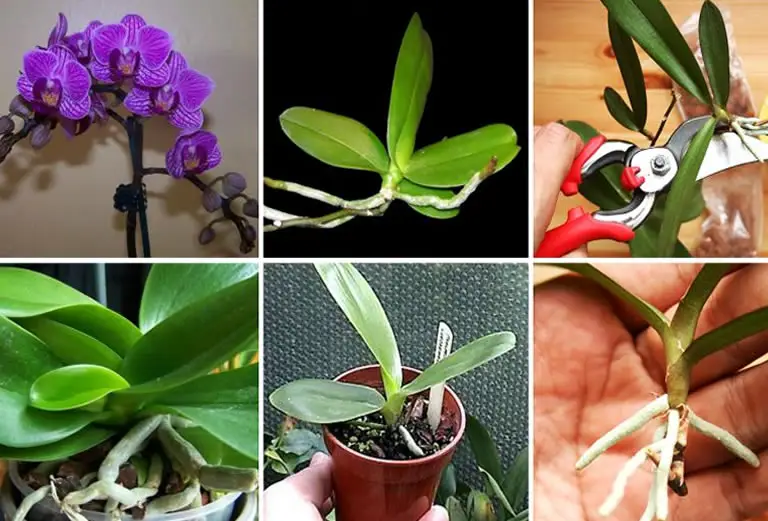
Orchids are elegant, rewarding houseplants with blooms that feel almost otherworldly. Learning to propagate them opens the door to multiplying your favorites, saving fading orchids, and sharing your collection with others. Whether you’re working with a Phalaenopsis, Dendrobium, or Cattleya, this guide walks you through every reliable method of orchid propagation—yes, including water.
Table of Contents
- Why Orchid Propagation Is So Unique
- Propagation by Division (for Sympodial Orchids)
- Propagation Through Keikis (Common in Phalaenopsis and Dendrobium)
- Propagation from Back Bulbs (Older Sympodial Varieties)
- Stem Cuttings (Best for Dendrobium)
- Water Propagation (Great for Rescue or Keiki Rooting)
- Outdoor Propagation Tips
- Common Mistakes and How to Avoid Them
- Popular Orchid Varieties for Home Propagation
- Final Thoughts
Why Orchid Propagation Is So Unique
Orchids don’t propagate like most houseplants.
Some grow in clumps, while others send out aerial plantlets called keikis.
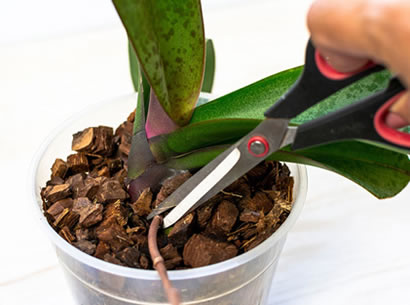
Because their growth styles vary, the best propagation method depends on the type of orchid you’re working with.
These techniques apply to the most popular orchids in home collections, including Phalaenopsis, Cattleya, Dendrobium, Oncidium, Paphiopedilum, Cymbidium, Vanda, and Miltoniopsis.
Propagation by Division (for Sympodial Orchids)
Orchids like Cattleya, Cymbidium, and Dendrobium grow from a creeping rhizome and form multiple pseudobulbs.
You can divide these once they’ve formed at least six healthy bulbs.
-
Remove the orchid from its pot and gently shake or rinse off the roots.
-
Use a sterilized blade to cut between natural clumps, ensuring each division has at least three bulbs and some live roots.
-
Pot each division in fresh orchid bark or a sphagnum mix suited to its variety.
-
Keep in high humidity with indirect light until new shoots appear.
This is the best way to rejuvenate older, overgrown orchids while producing healthy clones.
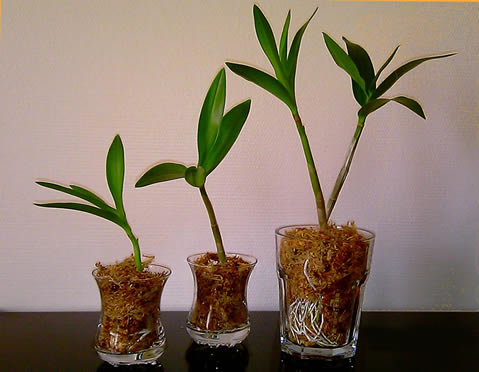
Propagation Through Keikis (Common in Phalaenopsis and Dendrobium)
Keikis are baby orchids that form on the flower spike or cane of certain varieties.
-
Wait until the keiki has 2–3 roots at least 2 inches long.
-
Cut the keiki from the mother plant with sterilized scissors, keeping some of the supporting tissue if possible.
-
Pot the keiki in a small container with a moisture-retaining orchid mix (sphagnum moss is perfect for young roots).
-
Keep humidity high and water sparingly until roots are well established.
You can encourage keiki formation by applying a keiki paste to a node on the flower spike, especially on Phalaenopsis.
Propagation from Back Bulbs (Older Sympodial Varieties)
Some orchids form back bulbs—older, leafless storage organs that can sprout new growth.
-
Choose firm, healthy back bulbs from a mature plant.
-
Place the bulb horizontally in moist sphagnum moss inside a shallow tray or small pot.
-
Cover with a plastic dome or bag to maintain humidity and place in bright, indirect light.
-
Wait patiently—new shoots can take weeks or even months to appear.
Once new growth has developed a few leaves and roots, transplant it into a regular orchid potting mix.
Stem Cuttings (Best for Dendrobium)
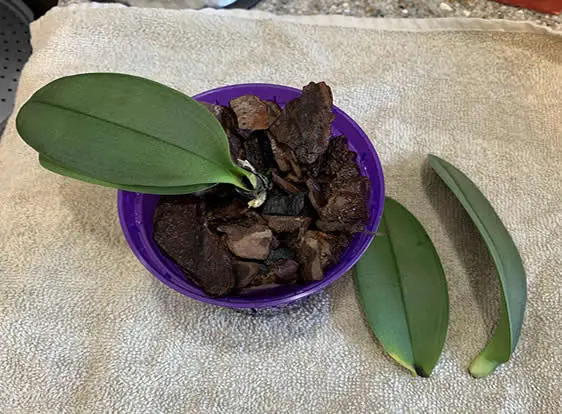
Some Dendrobium orchids can be propagated using stem segments.
-
Select a mature, non-flowering cane, and cut it into 4–6 inch segments.
-
Let the ends callous for a day or two to prevent rot.
-
Lay horizontally on moist sphagnum moss in a shallow tray or container.
-
Keep covered and humid with indirect light. Shoots will eventually emerge from nodes along the stem.
This is a slower but effective method for certain cane-type orchids.
Water Propagation (Great for Rescue or Keiki Rooting)
Water propagation works surprisingly well for Phalaenopsis orchids—especially when rooting keikis or rescuing rootless orchids.
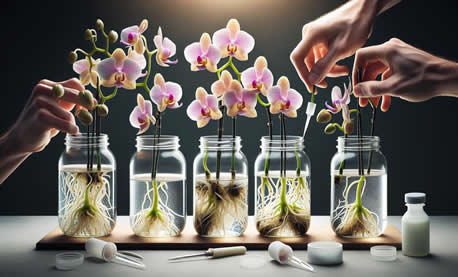
-
Suspend the orchid above a glass of water, allowing only the base of the roots to touch the surface. Do not submerge the crown or leaves.
-
Change the water every 2–3 days to keep it fresh.
-
Use filtered or distilled water if your tap water is hard or treated with chlorine.
-
Keep the setup in bright, indirect light.
-
Bonus tip: Add a few drops of diluted orchid fertilizer (like 20-20-20 or a bloom booster such as 2-7-7) once a week to support new root growth.
Once roots reach about 2–3 inches in length, transplant the orchid into sphagnum moss or orchid bark and continue standard care.
Outdoor Propagation Tips
If you live in a warm, humid climate (zones 10–11), orchids can be propagated outdoors:
-
Keep divisions and cuttings in dappled shade.
-
Use mesh pots, bark mix, or mount orchids to trees for airflow and root access to moisture.
-
Avoid propagation during extreme heat or rainy seasons.
Just be sure to protect young plants from pests and too much direct sun while they’re still establishing.
Common Mistakes and How to Avoid Them
Propagating too early: Let keikis or back bulbs mature before removing or repotting them.
Overwatering cuttings: Whether in moss or water, keep things moist but never soggy.
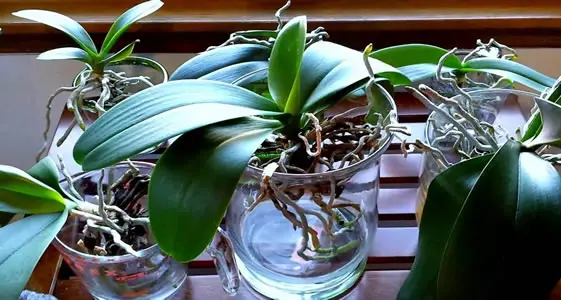
Lack of humidity: Young orchids and divisions need high humidity to root and grow.
Mold or rot: Always allow cut ends to callous, and never bury stems too deeply.
Popular Orchid Varieties for Home Propagation
If you’re wondering which orchids are best suited to propagation at home, here’s a look at the most popular and beginner-friendly types:
-
Phalaenopsis (Moth Orchid): The most common indoor orchid—great for keiki propagation and water rooting.
-
Cattleya: Known for fragrant, showy flowers; perfect for division.
-
Dendrobium: Includes many cane-style orchids that propagate well via keikis and stem cuttings.
-
Oncidium (Dancing Lady): Small, frilly flowers; often propagated by division.
-
Paphiopedilum (Lady’s Slipper): Grows in clumps—division is the best method here.
-
Cymbidium: Cold-tolerant and reliable bloomers, propagated by dividing their large clumps.
-
Vanda: Usually grown in baskets or hanging bare-root; propagate by division of mature plants.
-
Miltoniopsis (Pansy Orchid): Cool-loving orchids with sweet-scented flowers, best propagated by division.
These varieties are frequently featured in online collections and are well-loved for both their beauty and propagation potential.
Final Thoughts
Propagating orchids may sound intimidating, but it’s actually a highly rewarding process once you know the method that fits your plant best.
Whether you’re starting with a keiki, dividing a clump, reviving a rootless orchid in water, or rooting a cane in moss, the key is patience and the right environment.
With care and consistency, you’ll soon find yourself surrounded by new orchids—each one a piece of botanical art in the making.
Be sure to check out our orchid care guide Orchid Care Tips For Indoor Plants. You may also be interested in learning about the beautiful cactus orchids as well.
Thanks for reading! I'm Michael — houseplant fanatic and your Pinterest plant guide.
Follow me on Pinterest for fresh updates 🌿



